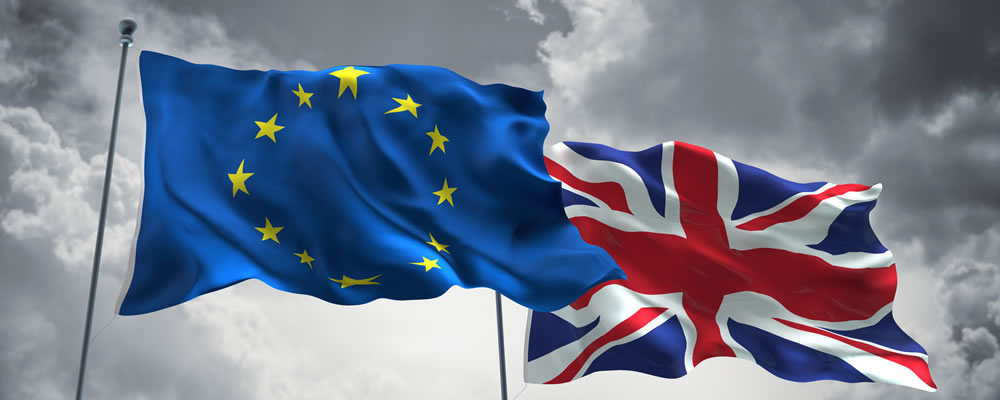- 2017 Pound Euro Forecast to Head Back to 2016 Lows in 2017 – Dependent on strength of Euro
- Flat movement in Final Week of 2016 – Lack of fresh influential factors for forex markets
- GBP Forecast: Brexit to Begin Before Q2 – Proposed start date for Brexit is March
- EUR Forecast: Eurozone Leadership Elections – Concerns of rising protectionism to affect Euro in 2017
Friday morning saw Pound demand pick up as investors bought the currency from its lows. A lack of fresh influential ecostats from the UK or Eurozone has left the pair fluctuating in corrective trade for most of the week.
Looking back on 2016, the GBP EUR exchange rate has lost around 20 cents in value, largely due to the Brexit vote in June. 2017 likely won’t be quite as bad but Sterling may still see some bearish movement in the year ahead.
The early 2017 Pound Euro Forecast is projected to trend on the downside too, particularly if next week’s UK PMIs reveal that economic activity dropped more in December than forecast.
(Previously updated 9:48 GMT 30/12/2016)
With markets preparing to close for the New Year break, the Pound Euro exchange rate prepared to close out 2016 trending in the region of 1.16 – 20 cents lower than the year’s opening levels, but 6 cents higher than the multi-year lows recorded back in October.
It looks like the pairing is going to have another tumultuous 12 months, but what can we expect from GBP EUR?
(Previously updated 16:45 GMT 29/12/2016)
The 2017 Pound Euro forecast is a bearish one, with many analysts predicting another bad year ahead for GBP as the UK begins its EU withdrawal process proper. However, if nationalism continues rising in the Eurozone as feared GBP EUR may avoid falling back to its worst 2016 levels of 1.10.
GBP EUR trended limply in the region of 1.17 during the final week of 2016. The pair is on track to have lost almost 20 cents throughout the year since January’s high of 1.36.
Pound (GBP) Trends Flatly as Brexit Concerns Weigh
The Pound’s performance in the foreign exchange market has been largely lacklustre over the last week. Ongoing concerns about the UK losing access to the EU’s single market following the Brexit, as well as other Brexit jitters, have kept investors wary of Sterling .
The UK government is set to begin its Brexit process by the end of March 2017 and as 2016 comes to an end the reality of that increasingly inevitable event is weighing on the Pound.
Brexit optimism among investors is also increasingly dimming. Just last week the Pound performed poorly on news that any European Union member state would be able to veto a potential post-Brexit UK-EU trade deal, which has only left traders increasingly worried about Britain’s future.
This week’s UK data has been too light to influence Pound exchange rates. Wednesday’s November house loans report from the BBA printed at a disappointing 40,659.
Thursday’s Nationwide house price results came in with a better than expected 4.5% year-on-year and 0.8% month-on-month. However, house price growth in London appeared to slow, suggesting the London house price boom is fading.
Euro (EUR) Benefits from Weaker US Dollar (USD)
Demand for the Euro has been heavily influenced by the strength of the US Dollar in recent months. The Euro commonly sees a negative correlation with the US Dollar due to the volume of EUR/USD trades.
The US Dollar has been bullish since President-elect Donald Trump proposed fiscal policies intending to stimulate inflation in the US, as well as the Federal Reserve hinting at as many as three US interest rate hikes in 2017. The Euro has had little room to breathe as a result.
Due to the quiet trade in markets this week however, the Euro’s performance has improved slightly. On Thursday morning especially, the US Dollar was sold from some of its recent highs, allowing the single currency to advance.
The shared currency may also have benefitted from a new poll indicating that support for the EU remained above 60% in most member states.
However, while the number of respondents who wanted to leave the EU actually decreased in Germany and France, the fear that increasingly popular nationalist parties may take advantage of citizen dissatisfaction with their nation remains.
2017 Pound Euro Forecast: How Low will Sterling Go in the Year Ahead?
Downside factors in both GBP and EUR trade are considerable looking ahead. Brexit jitters will continue to weigh on Sterling while nationalism concerns will weigh on the Euro.
Investors fear the rise of nationalism in the Eurozone as it may prompt a member of the Euro bloc to vote for withdrawal. This has been seen as a considerable threat to not just the bloc but the currency itself.
However, these concerns are still largely a ‘what if’. The reality of the Brexit will have a genuine downside effect on the Pound in the coming year, which could begin right away as investors become jittery ahead of the planned March date for beginning the Brexit process.
Chris Saint from Hargreaves Lansdown stated;
‘Exchange rates are determined by the interaction of a diverse range of political and economic factors, including interest rates, inflation and growth, all of which are up for grabs in 2017, which is likely to make for lively currency markets in the coming year.’
In the shorter term, next week will see the publication of December PMIs from Markit for the UK and Eurozone, as well as Germany’s December employment results and the Eurozone’s preliminary December inflation results.
GBP EUR Interbank Rate
At the time of writing, the Pound Euro exchange rate trended in the region of 1.70, while the Euro Pound exchange rate traded at around 0.85.
The 2017 Pound Euro forecast is generally bearish.



